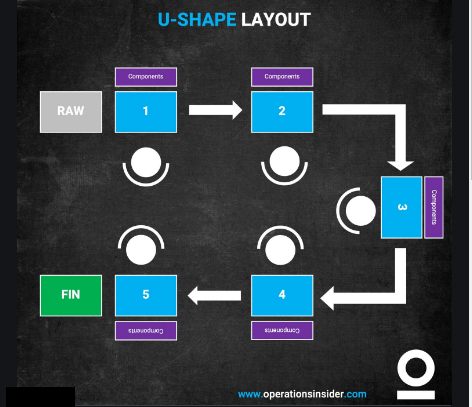We Need a Green Infrastructure Internet
“There are 2 ways to make money in technology…bundling and unbundling”…
(Original author of this quote is unknown, I’m sure it goes back further than this, but I found a Harvard Business Review article referencing this in 2014.)
Time for some unbundling. Or maybe you would call it bundling since we will be aggregating different smaller functional units together…
U Shaped Cells are more easily adapted to changing conditions
The conventional auto plant was a mega-monolith, a huge assembly line wending its way through the plant.
Toyota instead implemented the flexibility of U-shaped cells. More cells could be added when demand increased, and the space could be reallocated if demand declined.
What would the impact be if we could provide small, self-contained infrastructure units to communities? Providing energy, water, and waste management? Eventually other services?
And what if those were linked together in a “smart grid" like the internet? (Somebody please tell me this is already in the works).
How much more resilient would our infrastructure be if it was modeled more like the internet, with the ability to switch resources and services between nodes if needed? Instead of having huge single points of failure? (Recognizing the challenges of doing this with atoms, that is, physical matter, not just electrons?)
Rosie the Riveter and the Willow Run bomber plant level of effort for green self-contained community infrastructure units? Built on-site or near locally with local materials as much as practical?.
There will be a number of additional blog posts and references. but here’s the gist:
Small, decentralized infrastructure can be more easily implemented, can be greener, and we will learn from each “cell” that we build and deploy. Here are some of the high level components:
Power generation component. This could be solar, wind, nuclear, or (in the short term) fossil fuel in units designed for minimum emissions. Check out the last chapter of Atomic Accidents, titled “Caught in the Rickover trap” (on audiobook, start at 9:50 in Chapter 11), for info on less hazardous nuclear options (including Thorium based units. Thorium is available in the US).
Carbon capture unit. If fossil fuels are a component. Technology TBD.
Water unit. These are units that can pull water out of the air, supplemented as needed. Think Source.co (formerly Zero Mass Water) or AWG Contracting, which brought up a unit for Flint, which is located 20 minutes north of me and where I did a lot of environmental best practices cosulting work when the auto plants were still operating. In the winter in the north, this might require some integration with the heat from the power generation component, or other supplemental options. Check out The Poisoned City book for an example of the huge negative impact on water quality of sizing big infrastructure because of the auto plants in Flint when the big companies went away (yes, there were other contributing factors)
Waste units: composting, pyrolysis. Tiny house people and much of the developing world don’t understand why we pour drinkable water on our human waste, and then at great expense in both energy and dollars treat it so the resulting sludge can be put into a landfill. Appropriately and safety composting yields a beneficial soil amendment. Check out the Humanure Handbook. Small pyrolysis units could be used to generate energy (although carbon based).
Growing unit. Can utilize some of the CO2 from the power generation unit if fossil fuels are a component, can utilize compost from the waste unit, might be able to utilize other components from the Water and Waste units
Other units as determined to be useful for the particular situation
What if we could build units that could be hauled by semi-trailer, and assembled in clusters?
(Like a Tiny House community)
Who can design and build different pieces of this?
More to follow, put your thinking caps on.
